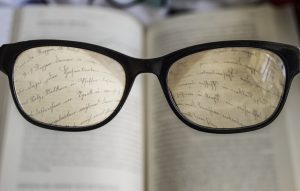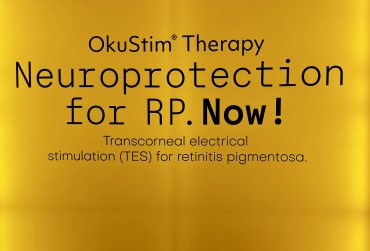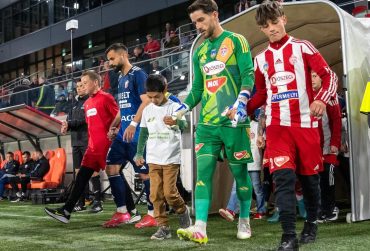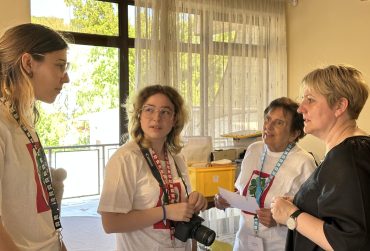Adult elementary rehabilitation is designed to restore the self-sufficiency and independence of people who have lost their sight in adulthood. This service does not exist in Romania. The goal of our current community fundraising campaign is to acquire a property that can fill this gap in addition to segregated education.
With loss of vision, essentially the same grief reaction occurs in the individual as can be observed after the loss of a loved one. The blind person must mourn his/her lost vision, go through the phases of the mourning process in order to live a mentally healthy, full life again. In the absence of support services, it is common for an individual who has lost their vision to be stuck in some phase of the grief process, thus responding to the fact of visual impairment with anger, denial, rejection, unrealistic hope for recovery, despair or indulgence. Elementary rehabilitation therefore includes psychotherapeutic assistance in addition to special pedagogical, social and other practical forms of assistance.
Elements of elementary rehabilitation as a complex helping process:
1. Functional vision testing and vision training
An important part of the identity of visually impaired people is their remaining vision and its use, so during their rehabilitation they should strive to be able to use their vision safely, while preserving the condition of their eyes. To do this, first of all, the remaining vision must be assessed. In this, a functional approach must be used, in addition to the visual acuity and the field of view, a number of other aspects that characterise vision and can be used in practice must also be examined, e.g. light-dark adaptation, contrast sensitivity, color vision, etc.
2. Retraining everyday activities
For everyday life you need to get to know the so-called. “Blind” techniques, tactile perception, memory, the practice of maintaining order. It is also necessary to know everyday tools to help the visually impaired, for example: talking scales, color recognition, practical kitchen utensils, egg separators, measuring cups, etc., you also need to re-learn shaving, makeup, nail trimming, and other elements of personal hygiene.
3. Learning to use communication tools
As a visually impaired, everyday communication opportunities also change. To take notes, you may need to use a dictaphone, braille, or other tools, you need to learn how to use the phone blindly, you need to work out things around the individual, e.g. documents, spices, detergents, etc. new system of marking.
4. Mastering Braille
Learning to write Braille should be at least at a level that the visually impaired individual can utilize in their daily lives, e.g. reading the labels of medicine boxes, marking file cabinets, making a shopping list, and so on.
5. Mastering the use of IT tools
The most important aid for visually impaired people in the XXI. century is clearly the computer and the smartphone. Blind people can use them through a screen reader, visually impaired screen magnification software, or operating systems ’own zoom and contrast settings. The most commonly used screen reader and screen magnifier software (Jaws for Windows, Magic and Fusion, VoiceOver on OSX systems) to help you use your computer is also available free of charge to Hungarian visually impaired people living outside Hungary thanks to a country licensing program supported by the Hungarian government. The online audio library application operated by the Hungarian Federation of the Blind and Partially Sighted, as well as the Távszem service, which provides visual aids, are also available to this target group. For more information about the software, the audio library and the Távszem service, feel free to contact the Hungarian Federation of the Blind and Partially Sighted (MVGYOSZ).
6. Teaching orienteering and transportation
For the visually impaired or completely blind, white cane transportation is one of the most important parts of elementary rehabilitation. This requires the assessment and development of hearing and directional hearing, as well as the verification of knowledge of the basic concepts essential for orientation, e.g. directions, parallel-perpendicular, etc. The practice of using the white cane begins with the acquisition of basic cane techniques (scanning, pendulum, stair climbing, wall tracking, etc.), then continues with traffic inside the building, and finally in a quiet and then increasingly busy street environment, vehicles, escalators, etc. becomes complete by practicing, mastering routes. Elementary rehabilitation may also include familiarization with driving with a guide dog, which is unfortunately very limited in Romania at present.
7. Supporting mental coping
The process of elementary rehabilitation is inconceivable without psychological support without a psychotherapeutic process to help cope with becoming disabled. This can take the form of an individual therapeutic process or group self-knowledge and coping support training.
8. Social rehabilitation
In the framework of elementary rehabilitation, the visually impaired individual must also be supported in order to receive the benefits and discounts provided to the disabled by the state or other institutions and non-governmental organizations, e.g. disability allowance, invalidity benefits, travel allowances, allowances for the purchase of special aids, etc.
9. Providing a self-help peer community
In self-help group sessions organized in parallel with the rehabilitation process, visually impaired people can share their difficulties, bad experiences, experiences of their vulnerability, but also their achievements and daily successes in the rehabilitation process. These groups have a retaining, motivating nature in the process, greatly reducing the dropout rate of those participating in the rehabilitation program.
10. Support for relatives
Indeed, the provision of information and psychological support to immediate family members is essential for the successful rehabilitation of a visually impaired family member. This requires encouraging and supporting the family, e.g. to be the one who initially accompanies the visually impaired person to the sessions, and not to be over-protected, not served in everything, but to be encouraged to apply the knowledge acquired in the rehabilitation program in their own living space.
11. Introduction of community programs, accessible entertainment, cultural and sports opportunities
For visually impaired people participating in elementary rehabilitation courses, it is advisable to organize leisure, cultural and sports programs on an optional basis, e.g. attending in theater or on a concert, hiking, swimming, touring a tandem bike tour, viewing a tactile museum exhibit, cooking or having a picnic together, trying out barrier-free board games, a narrated movie club, karaoke, etc.
Elementary rehabilitation activities in Hungary have a tradition of more than forty years and a serious literature. Therefore, the Association for the Visually Impaired Hungarians in Transylvania (EMLE) considers it essential to work closely with Hungarian institutions and organizations, in which our most important partners are the Hungarian Federation of the Blind and Partially Sighted (MVGYOSZ).
(This article is based on a study by Orsolya Németh, the professional leader of MVGYOSZ. If you have any questions regarding the above, please let us know.)





